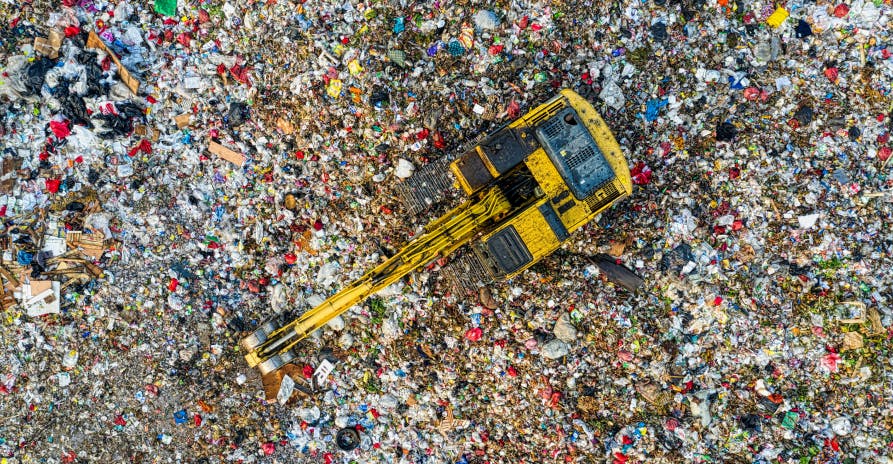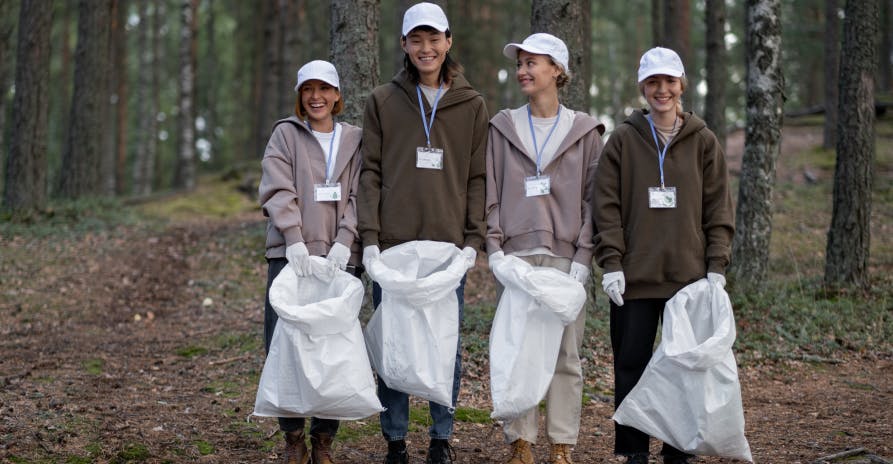
California Climate Accountability Package: SB253, SB261, & SB252
What is the California Climate Accountability Package, and how do SB 253 and SB 261 (SB 219), and SB 252 help the state work towards their environmental goals?
ESG / CSR
Industries



When you hear the term CERCLA, otherwise known as the ‘Superfund’ – it may be easy to think of it as a general fund that helps to save all negative impacts created by global warming. While it’s true that climate change can wreak havoc on all sorts of ecosystems and societies around the world, there’s one practice that despite the ability for full control, can still go haywire – and that’s the management of hazardous waste sites.
What is CERCLA, and how does it help to provide the funding necessary to restore areas affected by hazardous waste spills?
CERCLA, otherwise known as the Comprehensive Environmental Response, Compensation, and Liability Act and more casually referred to as the ‘Superfund’, was approved by Congress in December 1980. CERCLA allowed for taxes in both the chemical and petroleum industries, and helped to raise awareness on the importance of preventing hazardous substances from putting the health of Americans and the environment in danger. Originally, CERCLA was drafted as a response to several alarming and poorly managed hazardous waste practices occurring throughout the 1970s.
The Superfund, or CERCLA, went on to collect a whopping $1.6 billion, which was then allocated towards a trust fund dedicated to cleaning up additional hazardous waste sites. Ultimately, CERCLA served as a method to implement new expectations regarding hazardous waste sites, allowed liability for those managing the release of toxic substances at hazardous waste sites, and created a trust fund to help clean up these incidents when the original emitter of the hazardous waste couldn’t be identified.
Ultimately, one of the main goals of CERCLA is to classify hazardous waste sites where toxic pollutants and substances could result in spills, leaks, or other disruptful circumstances that could cause environmental harm or threaten the health of humans or animals. If a leak or spill is to occur, CERCLA uses its funds to assist in a clean up where the hazardous waste spill or leak occurred – referring these areas to Superfund Sites.
Without CERCLA, there would have been no funding to rectify the potential damage to both human and environmental health that these hazardous waste spills could have provoked.

CERCLA, while it creates funding to clean up poorly managed hazardous waste sites, predominantly acts as a law to allow for corrective action. These two potential actions include allowing for short-term removals in scenarios where the negative effects of a hazardous waste spill require immediate action, and long-term responses where more permanent action can be taken to mitigate the risk of further damage to the environment, human, or animal health.
CERCLA also works by allowing the National Contingency Plan, otherwise known as NCP, to be adjusted in order to adhere to the measures necessary to withhold various toxic pollutants or substances from harming the environment and the health of living organisms.
Think of a building permit or the need to have a driver’s license. Without the proper building permit or driving credentials, someone could get in trouble for executing construction on an entirely new property or for driving – but as long as the necessary permits are in place, there is no trouble. CERCLA acts a lot like a building permit or drivers license – as it allows for necessary action regarding hazardous waste, pollutants, and substances to be taken without further approval.
CERCLA had achieved viable success within the first six years of being implemented allowing for it to be amended by the Superfund Amendments and Reauthorization Act in 1986 – which emphasized the importance of allocating funds to mitigate harm from hazardous waste sites. More specifically, the amendment reiterated the importance of developing new technologies to clean hazardous waste sites, monitoring other federal and state regulations to improve hazardous waste standards, allowed for various new enforcements, raised the level of involvement for states involved in the CERCLA superfunding program, improved awareness of the health problems created by hazardous waste sites, incentivized greater participation in waste clean ups, and increased the trust fund to $8.5 billion.
Clearly, the amendment of CERCLA by the Superfund Amendments and Reauthorization Act helped to solidify the importance of the Superfund and bring new awareness to the value in mitigating the negative effects of hazardous waste sites.
CERCLA is important for a multitude of reasons. However, CERCLA is most pivotal as an environmental reform program – as CERCLA not only helps to make sure that the necessary actions to prevent the negative effects of hazardous waste are taken, but also to hold the parties responsible subject to hefty fines and various penalties. Therefore, CERCLA not only serves as a financial resources to help rectify hazardous waste sites that have been poorly managed – but CERCLA encourages these third parties to take accountability for their actions that have harmed the environment, depleted resources, time, money, and compromised the health of those most susceptible to respiratory problems.
Another valuable benefit created by CERCLA is how it engages the community to come together and rectify environmental crises together. In other words, those hazardous waste clean ups would be far less likely without the encouragement of CERCLA – meaning that CERCLA accentuates one of the most pivotal values in fighting against climate change: which is that success can be found in collective action and collaboration.

In addition to perpetuating the value of a collective effort, CERCLA also advocates for long-term protection of the environment as opposed to short-term actions. This is depicted not only through the continued modifications made to CERCLA to adhere to more current state regulations in the disposal of hazardous waste, but also as CERCLA had been granted additional funds by the Superfund Amendments and Reauthorization Act.
Most importantly, CERCLA has demonstrated how no mitigation strategy is one hundred percent full proof – as CERCLA seeks to not only determine which working sites could be deemed as a hazardous threat, but proceeds with correcting any hazardous waste scenario gone awry. This value is indispensable in the midst of the fight against climate change, as it helps people and businesses alike to recognize the importance of having back-up plans when their initial environmental mitigation measures fall short.
CERCLA isn’t the only program developed in order to avoid or rectify environmental problems created due to hazardous waste. The RCRA, also known as the Resource Conservation and Recovery Act, shares several of the responsibilities regarding hazardous waste with CERCLA – in addition to the Clean Water Act.
The RCRA serves as a federal law that helps to create the regulations necessary to ensure that waste is safely disposed – including solid or hazardous waste that could pollute the atmosphere. The RCRA also provides a standardized code to help define and what materials classify as hazardous waste, so that workers across various industries realize the precautions necessary that must be taken when disposing of certain types of waste. Ultimately, the main goals of the RCRA are to protect those who come face to face with hazardous waste, safeguard the environment from hazardous waste that can produce ozone depleting substances, and to motivate the correct recycling of products to prevent excessive waste from piling up in landfills and creating even more greenhouse gas emissions.
For instance, CERCLA and RCRA are both responsible for regulating the disposal of hazardous materials and how substances such as tanks of petroleum products are stored underground. The RCRA and CERCLA divide which types of waste to provide guidelines for disposal. Ultimately, both the RCRA and CERCLA work to prevent and rectify issues concerning hazardous waste, as the EPA has the ability to recruit both the RCRA and CERCLA to insinuate a cleanup.
Have the RCRA and CERCLA been successful in preventing the negative effects of hazardous waste?

CERCLA has proven its effectiveness on several different occasions, and given it wasn’t too long ago that the EPA lacked the authority to initiate hazardous waste cleanups entirely – the Superfund has helped to revive an exceptional amount of regions in environmental peril from hazardous waste leaks or spills.
Just a few examples of places and regions that have benefited from CERCLA cleanups include Cape Cod, the Hudson River, the Savannah River, Philadelphia Navy Yard, Rocky Mountain Arsenal, Bunker Hill, Eureka Mills, and Elysian Park – demonstrating how CERCLA has helped cleanups across the country.
One example of CERCLA having been successful is how it helped part of the Hudson River after over one million pounds of polychlorinated biphenyls, known as PCBs for short, were disposed of into the river in the 1970s. By the mid 1980s, the EPA made it a priority to clean the Hudson River – which infamously flows beside Manhattan in New York City. CERCLA helped to remove over three hundred thousand pounds of those PCBs, which was over twice the amount CERCLA was expected to remove.
Another example of CERCLA having helped is with Elysian Park in Colorado – where immense rain and subsequent flooding occurred in September 2013 that left part of the park eroding into the nearby creek, which also served as a watershed that provided drinking water for almost 15,000 people. The floods resulted in excess metals, lead, arsenic, and beryllium – both of which can harm human health and surrounding ecosystems. With the help of CERCLA and the EPA, Elysian Park was restored by implementing waste rock piles to help restabilize riverbanks and prevent flooding from compromising fresh drinking water again.

CERCLA, or the Superfund, has helped a wide variety of regions and states across the U.S. – but does CERCLA have room for improvement?
CERCLA has helped several parks, rivers, and various bodies of lands across the U.S. clean up from poor hazardous waste management. However, CERCLA isn’t perfect – as over 1,330 projects remain on the waiting list to receive CERCLA’s funding and services, with many of those projects having been on the waiting list since its initial creation in 1983. Therefore, one of the biggest problems with CERCLA is how the Superfund, while it has been successful, still remains underfunded. Most notably, funding for CERCLA was cut in half from 1999 to 2013, and as climate change has only gotten worse – only more areas will require the funding of CERCLA to be rehabilitated.
Programs like CERCLA won’t be superfunded forever as long as environmental predicaments persist and governments continue to cut funding for programs like Comprehensive Environmental Response, Compensation, and Liability Act. Ultimately, the best way to avoid the need for CERCLA, is to prevent these environmental cleanups in the first place.
If reading this article on CERCLA has made you interested in reducing your carbon emissions to further fight against climate change – Greenly can help you!
Greenly has an entire section dedicated to finances to help ensure that your company can find the sustainable investment right for your company. We can help you to find the right funding for you project or company.
Greenly can help you make an environmental change for the better, starting with a carbon footprint assessment to know how much carbon emissions your company produces.